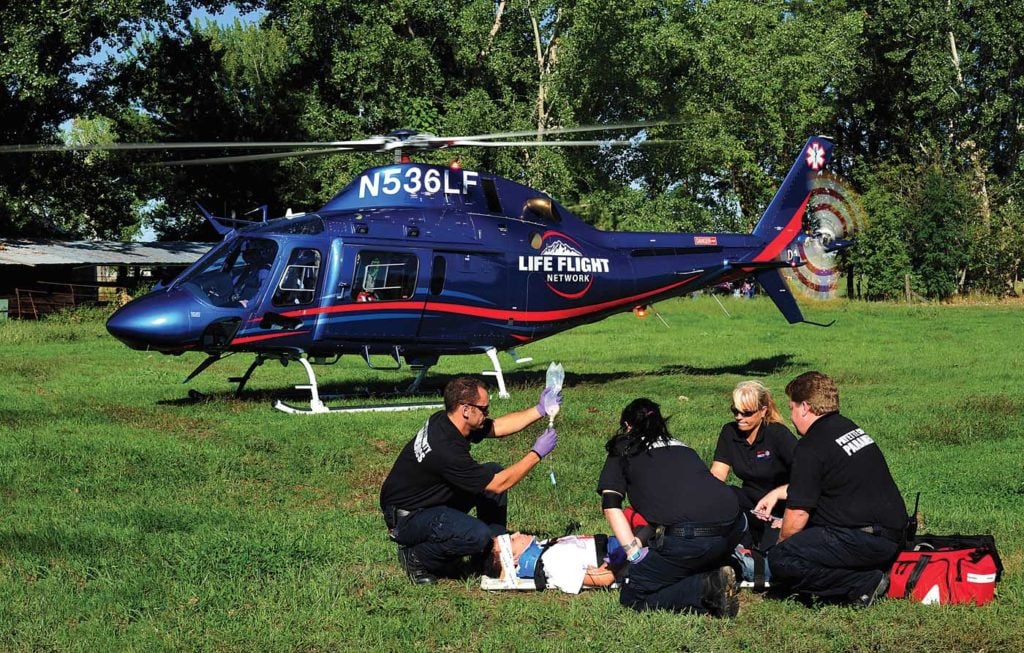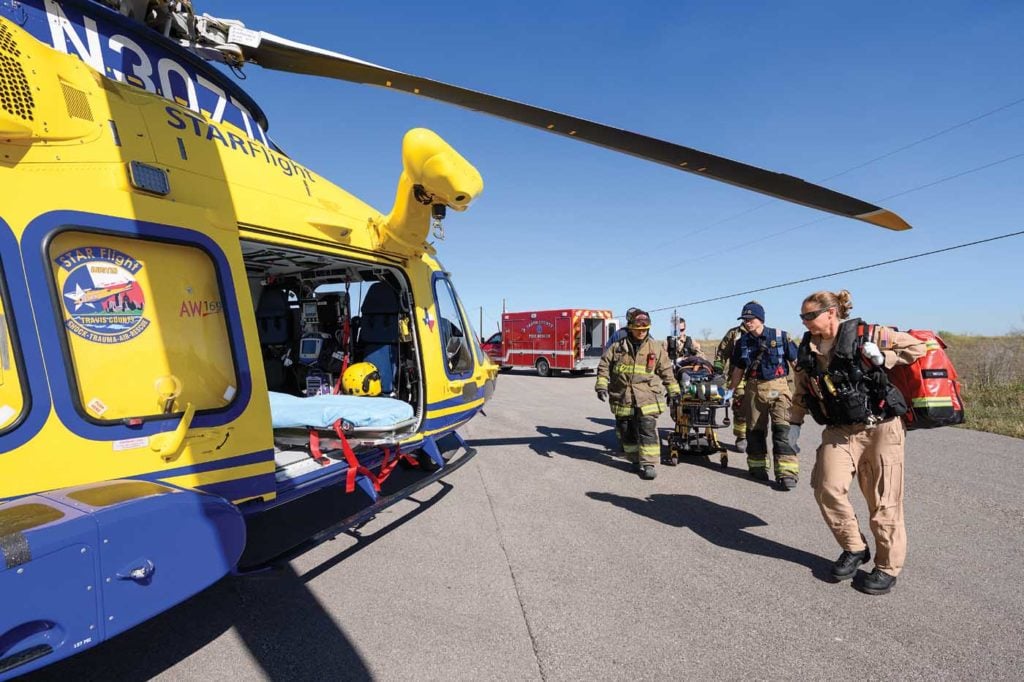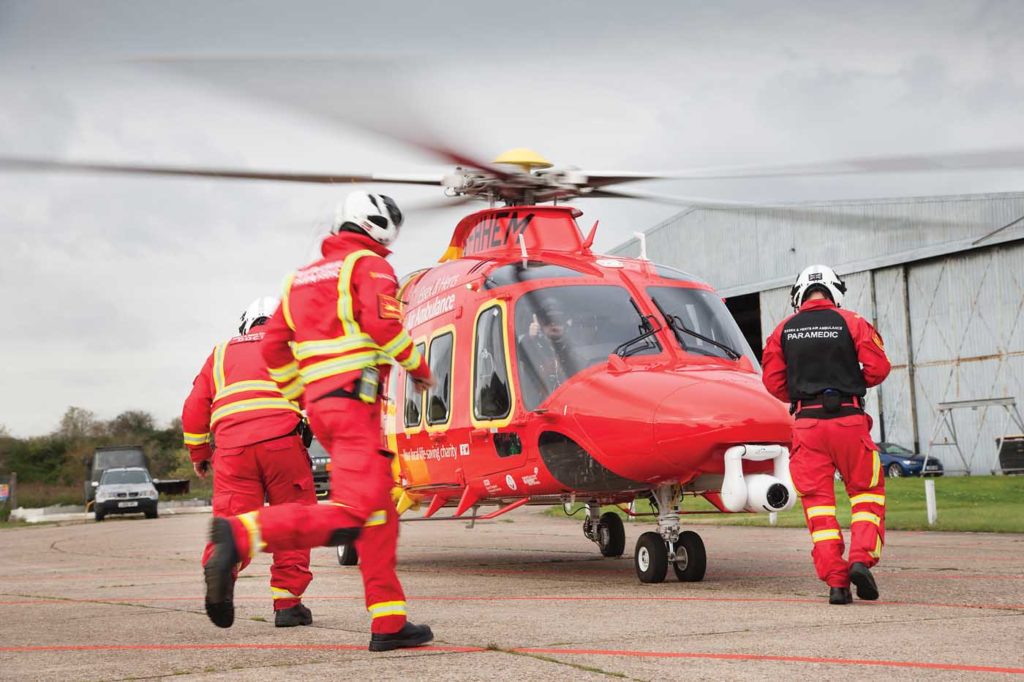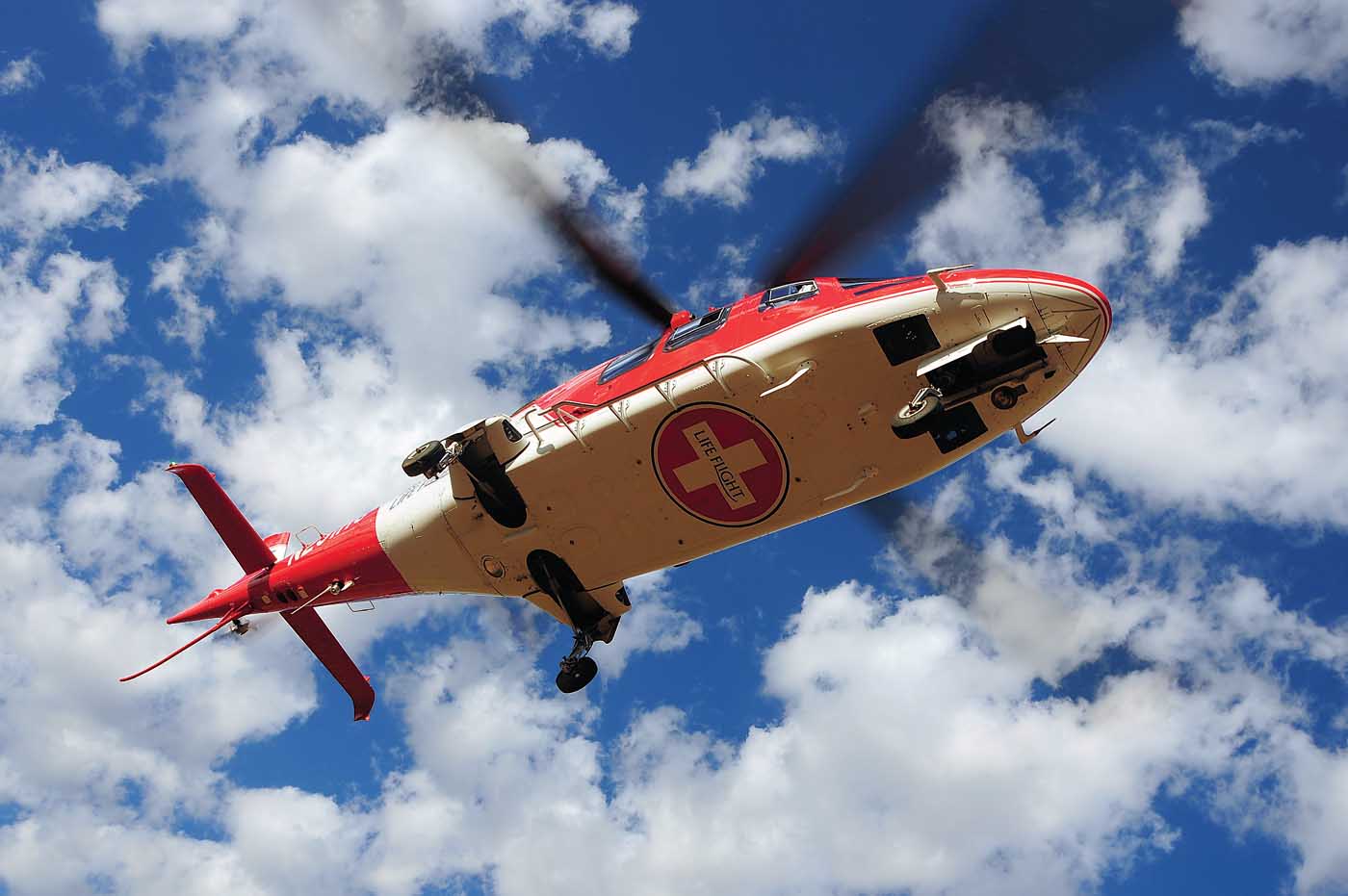In 2022, emergency departments are saving more lives than ever before, with crew able to begin treatment and stabilize the patient in flight while sending clinical parameters in real time via datalink to the arrival hospital. This allows the waiting ground crew to have the information necessary to act immediately upon landing, saving time and ensuring that the patients have a better chance of survival and recovery. In recent years, some EMS providers have moved to a larger helicopter platform to better accommodate the specific needs of their medical personnel and patients. The capabilities of these helicopters have dramatically improved the ability to fly and perform missions in difficult weather conditions and varying climates, allowing for services 24/7/365. Developments also reflect changing requirements for medical cabin interiors reflecting needs arising from a trend toward increased weight and height of populations worldwide.

Leonardo’s fleet of helicopters is well-positioned to meet the rapidly changing asks of EMS customers, with aircraft designed to address today’s needs while anticipating future requirements with the certainty that medical systems and the requirements of rescue missions are ever evolving.
The AW119Kx: Fast and Flexible
The AW119Kx is the first light single-engine helicopter to meet all instrument flight rules (IFR) standards while still providing a spacious interior, allowing for full patient access and the ability to accommodate specialty transport, such as a patient on extracorporeal membrane oxygenation (ECMO). The AW119Kx delivers outstanding controllability and maneuverability, even in “hot and high” conditions. Ideally suited for EMS missions due to its performance and capability, it retains the features typical of a light twin-engine including redundancy of all critical systems, while its high endurance and long-range capabilities allow operators to respond quickly.
Its spacious and versatile cabin has the capacity for three medical attendants and a single stretcher, or two attendants and a dual stretcher allowing 360-degree patient access. The modular interior can accommodate a wide range of equipment. The AW119Kx features the Garmin G1000NXi VFR glass cockpit to enhance situational awareness, with the Genesys AeroSystems IFR glass cockpit available as an alternative to allow pilots to operate the aircraft safely while flying with low visibility and during challenging weather conditions.


The AW109 GrandNew: See Further, Go Anywhere
The AW109 GrandNew is Leonardo’s answer to a market need for a helicopter that blends performance, speed, payload and operational flexibility, while allowing for less environmental impact. Capable of operating in the most severe conditions, it’s a light twin-engine, multi-role helicopter that offers the highest safety by utilizing advanced navigational and situational awareness technology. The AW109 GrandNew is optimized to excel in the challenging conditions during which EMS and search-and-rescue (SAR) missions must fly, fully complying with safety, performance and effectiveness requirements required by the toughest missions.
Allowing for exceptional cabin flexibility, its unobstructed cabin space allows complete patient access and can be configured in a wide range of layouts, including single or dual stretchers with up to four seats for medical attendants and up to six seats for medical evacuation (MEDEVAC).
The spacious interior can accommodate an extensive range of emergency medical equipment. The AW109 GrandNew features outstanding technology and safety, including a state-of-the-art glass cockpit with four-axis digital autopilot to reduce pilot workload and increase situational awareness by utilizing a synthetic vision system (SVS) and helicopter terrain and awareness and warning system (HTAWS).
And the AW109 GrandNew performs in the most severe conditions, including “hot and high” conditions.

The AW169: Next Generation Versatility
The AW169 meets the growing demand for a next-generation helicopter that combines class-leading performance with superior medical capability and safety. The versatile AW169 brings unrivalled operating capability in even the most challenging conditions. It features an auxiliary power unit (APU) mode that ensures mission-readiness with rotors stopped while providing enhanced ground safety. APU mode allows crews to treat/stabilize patients while on the ground with the rotors stopped. Once the patient is ready to fly, it’s an easy and quick transition to flight.
The AW169 is designed around patient needs and is the ideal platform for life-saving primary and secondary missions, and rescue services. It allows for rapid emergency responses, even for long-distance interhospital transport or for EMS and SAR missions at high altitude. The AW169 provides the highest levels of safety by meeting all the latest certification standards and regulations, while the glass cockpit combines latest generation avionics with exceptional external visibility, maximizing situational awareness while minimizing pilot workload during day and night operations. It has the largest cabin in its class with a flexible design that can accommodate two stretchers, either longitudinally or transversely, including both the Ferno and Stryker wheeled stretcher variants. Wide sliding doors allow for easy access, while the spacious cabin ensures full patient accessibility. And there’s a large baggage compartment available to store additional stretchers and equipment.
The already mentioned APU mode enables operation of the environmental control system, radios and medical devices even when the rotors are stopped. Bottom line: the AW169 ensures air medical professionals can be there for their patients when it counts the most, while providing the best in patient care.









